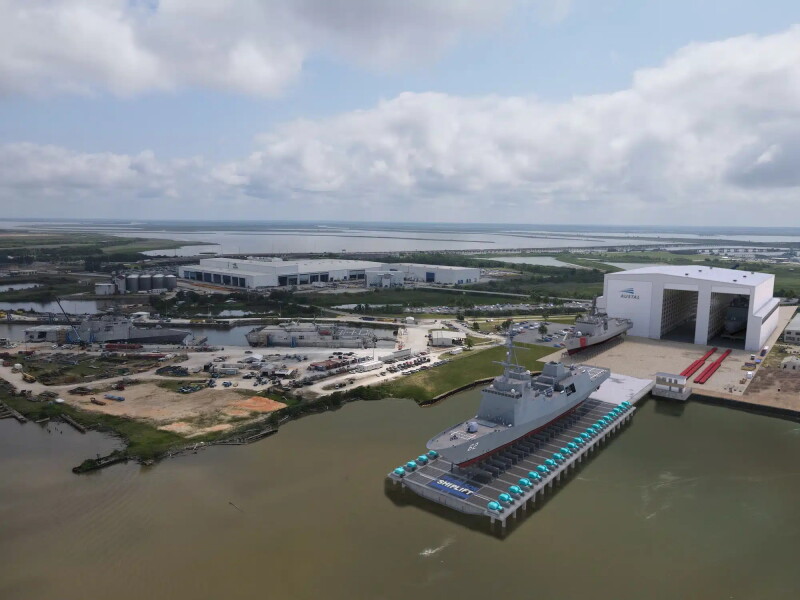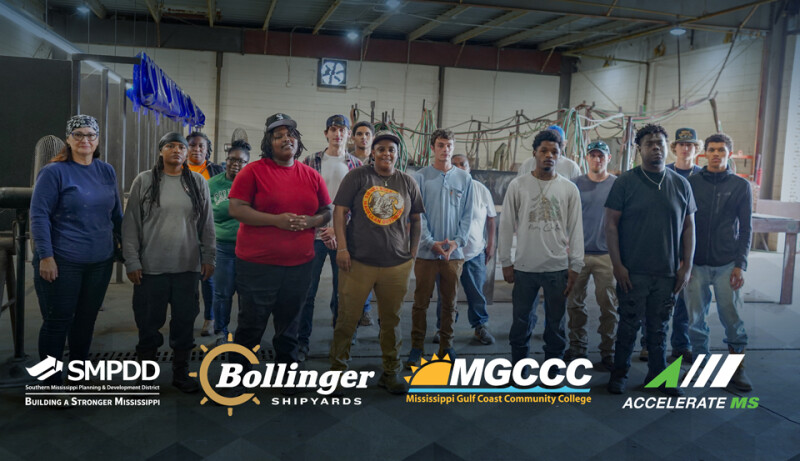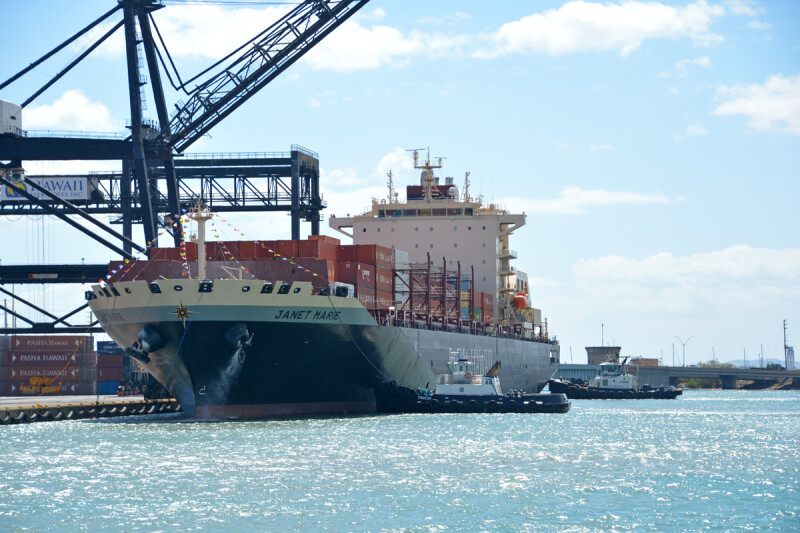In April, President Donald Trump signed a sweeping executive order — “Restoring America’s Maritime Dominance” — aimed at rebuilding the U.S. shipbuilding industry and reducing what he described as China’s grip on global shipping. He also established a new Office of Maritime and Industrial Capacity at the National Security Council in the White House.
Trump told reporters the U.S. plans to spend “a lot of money on shipbuilding” to restore the country’s capacity in the sector.
Not normally known for understatement, Trump didn’t go far enough in his assessment of the situation. The 472'x184' offshore wind installation vessel Charybdis, for example, built at Seatrium AmFELS shipyard in Brownsville, Texas, is said to have cost upwards of $715 million. That might be comparing apples to oranges, but it speaks to industry construction costs.
The order calls for significant federal investment in American shipyards and the maritime workforce and outlines a new Maritime Action Plan to be coordinated by the Maritime Administration (Marad). The plan includes the establishment of a Maritime Security Trust Fund, shipbuilding tax incentives, and the launch of strategic commercial fleet programs.
Marad said it will work with other federal agencies to create a flexible investment program to fund commercial vessel construction and shipyard modernization.
In 2023, U.S. shipyards accounted for just 0.1% of the world’s new ship construction, while China built more than 50% of the global total, according to the Marine Engineers Beneficial Association (MEBA).
Earlier this year, Roland Rexha, MEBA’s secretary-treasurer, called the order a “vital first step” in restoring American leadership in global shipping and creating middle-class union jobs.
“For nearly half a century, our nation’s maritime industry has steadily declined due to neglect, underinvestment, and unfair competition driven by China and other adversaries,” Rexha said, pointing to the Covid-19 pandemic as a key moment that revealed America’s limited ability to transport its own goods domestically and internationally.
In a January report from the Office of the U.S. Trade Representative entitled “Report on China’s Targeting of Maritime, Logistics, and Shipbuilding Sectors of Dominance,” findings point to several Chinese practices that are concerning.
The report came about after five labor unions filed a Section 301 petition regarding the acts, policies, and practices of China to dominate the global maritime industry. The petition was filed pursuant to the Trade Act of 1974, which Congress intended to expand U.S participation in international trade and reduce trade disputes.
“Petitioners allege that China targets the maritime, logistics, and shipbuilding sector for dominance and engages in a wide range of unreasonable or discriminatory acts, policies, and practices that provide unfair advantages across maritime industries, such as shipbuilding, shipping, and maritime equipment,” according to the report.
“The disclosed discriminatory acts include implementing industrial planning and policies that are designed to unfairly capture market share, distort global markets, and advantage Chinese enterprises; directing mergers and anticompetitive activities; providing non-market advantages to Chinese firms to dominate key upstream inputs and technologies; providing advanced financing mechanisms advantaging Chinese industry; creating a Chinese network of upstream suppliers, foreign ports and terminals, shippers, and equipment and logistics software that allow advantageous use of information; tolerating intellectual property theft and industrial espionage; and controlling shipping freight rates and capacity allocations,” the report said. The petitioners also allege that China threatens to discriminate against U.S. commerce and disrupt supply chains.

IF YOU BUILD THEM…
According to the office of Sen. Mark Kelly, R-Ariz., only 80 U.S.-flagged ships are active in international trade. Kelly is part of a bipartisan group that brought back the Shipbuilding and Harbor Infrastructure for Prosperity and Security (SHIPS) for America Act, and its companion bill, the Building SHIPS in America Act, this spring (The legislation was first introduced in December.).
Trump’s executive order is aimed at rebuilding the U.S. shipbuilding industry, but the president and members of Congress who champion the executive order seem to be ignoring a crucial and productive piece of the “shipbuilding industry.” Tier II shipyards have been constructing hundreds of boats and ships a year for decades, including many Coast Guard and Navy assets. These include very few oceangoing vessels, granted, but should that dismiss them from America’s shipbuilding industry?
“There used to be more than 300 U.S. shipyards just half a century ago regularly releasing hundreds of big beautiful American-flagged ships out to sea,” said U.S. Transportation Secretary Sean Duffy in an op-ed that appeared in the Washington Examiner in April. “Today, just roughly 20 public and private shipyards remain, with major production sites shut down from coast to coast and down to the Gulf…”
Do many politicians know the difference between a Tier I and Tier II shipyard? Are they familiar with the vessels that are built at shipyards best known as Tier II yards like Eastern Shipbuilding Group, Panama City, Fla.; Austal USA, Mobile, Ala.; Bollinger Shipyards in Louisiana and Mississippi; Fincantieri’s Wisconsin yards — Bay Shipbuilding and Marinette Marine, among others? Or are they just looking at Tier I yards like Huntington Ingalls Industries’ Ingalls Shipbuilding, Pascagoula, Miss., and Newport News Shipbuilding, Newport News, Va., and General Dynamics’ NASSCO, San Diego, and Bath Iron Works, Bath, Maine, which have mostly concentrated on building warships for decades?
Eastern, Austal USA, Bay Ship, Marinette Marine, and Bollinger either now have the capacity or could ramp up to build all but the largest oceangoing commercial vessels. Hanwha Philly Shipyard, Philadelphia, and Seatrium AmFELS have built containerships.
One of the main features of the SHIPS bill is the creation of a Strategic Commercial Fleet Program aimed at increasing the U.S.-flagged fleet to 250 vessels. The ships would have to be U.S.-built, U.S.-crewed, and capable of serving national defense interests. While temporary use of foreign-built ships would be permitted, that allowance would be phased out after fiscal year 2030.
Eighty U.S.-flag vessels active in international trade suggests that 170 would have to be built between now and the 2030 phase-out of foreign-built vessels. If all 12 of the shipyards mentioned participated, they would each have to build 14 ships in the next five years to reach the 250 number. Even if Duffy’s number (20) is right, that’s still 8.5 ships per shipyard in five years.
Shipyards would need to ready their facilities to build ships they have never constructed before. Designers and architects would be tasked with developing ships outside their prior experience. And there would be additional stress on an already depleted shipyard workforce.
“Realistically, it can take months to go through the design and contracting phase on building a new class of vessels,” said Matt Paxton, president, Shipbuilders Council of America (SCA). “However, there are ways to streamline this process, using a vessel construction manager, to get the construction process underway expeditiously,” as was done with the national security multimission vessel series constructed at Philly Shipyard.
One champion of the SHIPS bill is Crowley’s chairman and CEO Tom Crowley. His company built two 720'x105' LNG-fueled combination container/roll-on, roll off vessels — El Coquí and Taino — at the former VT Halter Marine shipyard, now Bollinger Mississippi Shipbuilding, Pascagoula, Miss. They are dedicated to servicing Puerto Rico from Jacksonville, Fla. (The sisterships were named WorkBoat’s Boat of the Year in 2019.)
“We commend Senators Kelly and Young, along with Representatives Kelly and Garamendi, for their leadership in introducing the SHIPS for America Act,” said Crowley. “This comprehensive legislation thoughtfully addresses many critical challenges facing the U.S. maritime sector. To strengthen the U.S. economy and national defense, the final bill must enable robust growth of our nation’s international U.S.-owned, -crewed, -flagged, and -built merchant fleet.”
In WorkBoat’s May issue, Craig Hooper, founder and CEO of the Themistocles Advisory Group, a Washington, D.C. consulting firm specializing in maritime and national security strategy, wrote that “America is simply not generating enough naval architects and engineers to quickly push America’s waterfront into production. With too few architects and engineers, requirements are misunderstood, technical innovations depart from the possible, and the schedule slips everywhere, as engineers struggle to develop a final design.”
Whatever the obstacles, Eastern’s president and CEO, Joey D’Isernia, is ready to get the restoration started.
“Eastern has a long and proven history of building a wide variety of complex commercial vessels,” said D’Isernia. “Our shipyards have already delivered some of the most sophisticated and sizable vessels operating today, including the iconic Staten Island Ferries (320'x70'), the ferry Long Island (302'x52'), and the R.B. Weeks trailing suction hopper dredge (364'x79').”
Are those vessels counted among MEBA’s 0.1% or only cargo carrying, oceangoing vessels included, dismissive of Tier II shipbuilding?
D’Isernia said his shipyards can build whatever the president is looking for. “As we understand it, the goal is to rebuild a resilient U.S.-flagged commercial fleet, including tankers, containerships, general cargo vessels, and vehicle carriers,” he said. “America’s shipbuilding advantage lies in its engineering innovation, steadfast ingenuity, and the strategic importance of domestic production.”
Marad said 90% of global goods are moved by sea, but U.S. presence in international shipping has shrunk dramatically. China is now outproducing the U.S. in [Tier I] shipbuilding by a factor of 250 to 1.
“We can’t just sit back. We have to do something,” said Jennifer Carpenter, president of the American Maritime Partnership. “We have to build up the fleet even if it’s two one year and five next year.”
Carpenter, who is also the president and CEO of the American Waterways Operators, said she applauds the president and Congress for what they are trying to do. “We don’t have to match China,” she said, “but we need to have more big ships under the U.S. flag.”

WORKFORCE CONCERNS
If the U.S. fleet can’t crew 17 of the 80 ships it now has, where are the mariners going to come from to crew 250? Calculated at the current 21.25% rate, 53 of the 250-ship fleet the SHIPS’ authors are looking for would be tied up with no one to operate them.
“Recently, I had the opportunity to get an up-close look at the Merchant Marine Academy in Kings Point, New York. Since World War II, the Academy has operated as a critical training ground to prepare mariners today for the rough waters of tomorrow,” Duffy wrote in his April op-ed. “But what I saw was a dilapidated campus where first-rate students are trained under second-class conditions. Mold contaminates dorms and classrooms. Tar drips from the ceilings. Water damage is everywhere. Simply put, the Academy has become a disturbing reflection of our maritime industry after decades of neglect.”
And where are the shipyard workers coming from? Recruitment, training, and retention has been a festering problem going back many years.
During a visit to Master Boat Builders in 2023, the Coden, Ala., yard’s president, Garrett Rice, bemoaned the modern-day pool of shipbuilding recruits. “We recently had a week where we brought in 45 to 50 people,” he said. “I think we kept seven.”
The average age of U.S. mariners, including shipyard workers, is about 50 years old. Meanwhile, younger generations don’t seem interested in working in the maritime industry in any capacity. Known as the “silver tsunami”, this problem will only worsen as efforts to increase fleet capacity revs up.
“Despite strong demand for ships, talent supply has struggled to keep pace — especially as industry labor needs and jobs have evolved,” according to a McKinsey & Co. report entitled “Charting a New Course: The Untapped Potential of American Shipyards.”
The report goes on to say that in addition to skilled-trade labor, gaps in other shipbuilding professions cannot be overlooked. “Shipbuilding is as much about scheduling, production control, and critical chain management as it is about steel fabrication,” the report noted.
Still the big question is how can the industry get young people interested in a sector that’s not considered “cool”? One way to attract young people is to go after them early. Maritime High School, Des Moines, Wash., near Seattle, and New York City’s Urban Assembly Harbor School are successful models for other schools to copy.
Founded in the early 2000s as part of a citywide secondary school overhaul, the Harbor School is a high school specifically created to train future mariners, marine scientists, and industry leaders. As of last year, its enrollment was about 500 students in ninth through 12th grades.
New York City’s secondary schools now include a wide variety of education/vocational options that middle school kids can choose from. Students rank their choice from one to 12. Harbor School is so popular that it gets many more number-ones from prospective students than it can accommodate. The school is currently expanding, however, and hopes to double its year-class size.
That’s positive news. Unfortunately, though, the president’s initiative doesn’t give time to wait for high school kids to become full-fledged mariners.
“There are currently local, regional, and national hiring programs that are designed to attract the next generation of the shipyard workforce,” said SCA’s Paxton. “Private industry will be able to ramp up hiring to build these vessels once contracts are signed. Like any other industry, it responds to market demand. American shipyards will have the certainty they need to invest in ramping up their workforce once orders are placed for these vessels.”
Eastern’s D’Isernia said the president’s executive order recognizes that shipbuilding is a strategic industry and drives a demand signal for an earnest focus on domestic yards and labor. “With consistent national policy and budget cycles, less onerous regulations, targeted investment, and public-private collaboration, we believe America can compete — and win — in commercial and government shipbuilding once again,” he said.




